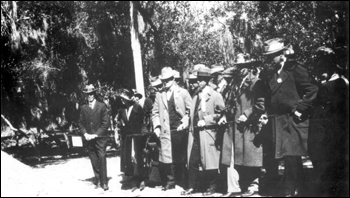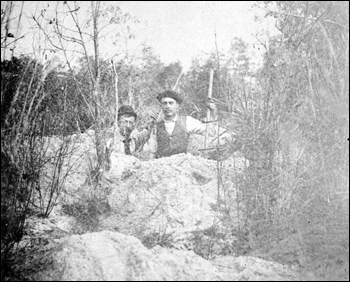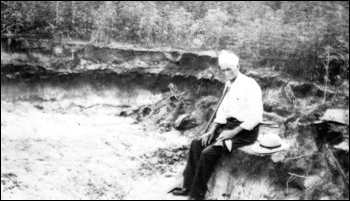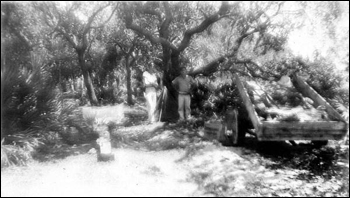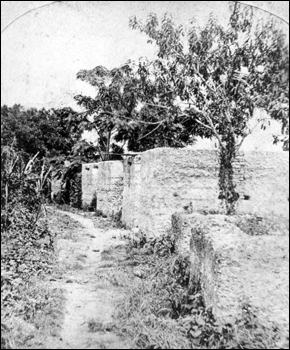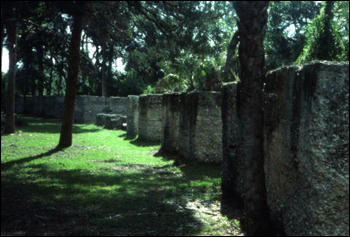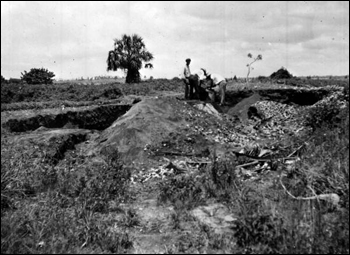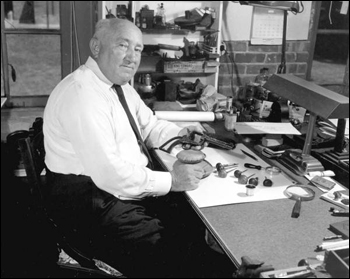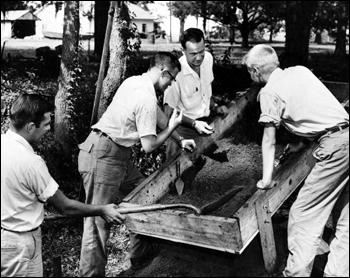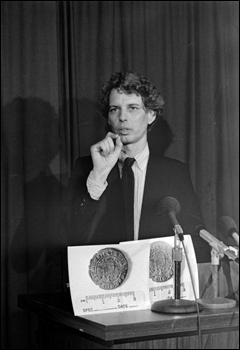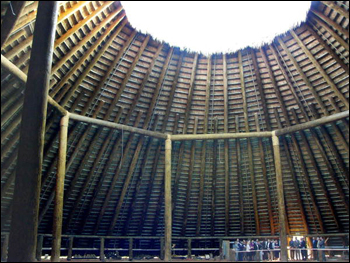Photo Exhibits
Photo exhibits spotlight various topics in Florida history, and are accompanied by brief text intended to place selected materials in historical context.
Florida Archaeology
Studying and Exploring 12,000 Years of Floridians
Archaeology as History
European explorers and settlers remarked on the constructions and ruins of Native American cultures since Europeans first arrived in Florida, and later day travelers such as John and William Bartram noted the remains of native cultural features. Documented amateur excavations have been mounted at suspected Native American sites for longer than Florida has been a state, as early as 1834.
People watching Smithsonian Institution excavation of Indian mound : Weedon Island, Florida (1923)
Image Number: RC07988
Two men at an indian mound (1892)
Image Number: PR07198
Indian mound on the property of J.R. Pierson : Vero Beach, Florida (1936)
Image Number: GE1383a
Showing the site of the excavation by P.D. McKeller at Vero Beach during the winter of 1936.
Excavation at Tower Mound: Saint Marks National Wildlife refuge, Florida (1937)
Image Number: N039983
By the end of the nineteenth century, Jeffries Wyman, S.T. Walker, Clarence Moore and J. P. Rogan of the federal Bureau of American Ethnology conducted extensive scientific studies of some mounds and middens. The first widespread professional archaeological work to take place in Florida wasn't until the New Deal programs of the 1930s. Even then, according to archaeological scholar Jerald Milanich, the state did not undergo significant growth across the field of archaeology until the 1960s.
Remains of slave quarters at the Kingsley Plantation : Fort George Island, Florida (c. 1873)
Image Number: PR10578
View showing tabby slave cabin remains at Kingsley Plantation State Historic Site : Fort George Island, Florida. (1977)
Image Number: COM00572
Kingsley Plantation was a state park from the 1950s until 1989. Tours of the house, furnished with antiques purchased in the 1950s and 1960s, were offered by park staff. In 1989, U.S. Representative Charles Bennett negotiated the creation of the Timucuan Ecological and Historical Preserve, which would include national, state, and city properties and parks. As part of the negotiation, the State of Florida purchased Fort George Island to be used as a state park, but transferred Kingsley Plantation to the National Park Service.
Screening the earth for artifacts at a village site in the Miami area : Florida (1935)
Image Number: N032211
Between the 1960s and the 1990s, Florida experienced a rapid expansion of archaeology, from the increasing size of university programs and the number of graduate students, to the establishment of professional organizations and federal and state laws regulating the protection and analysis of resources, and a proliferation of research sites dedicated to studying the entire vast array of time periods, cultures, and environments demanding attention. (Milanich, Jerald T. Archaeology of Precolumbian Florida. Gainesville, FL: University Press of Florida, 1994.)
Park museum curator William Decker with artifacts at Fort Clinch: Fernandina Beach, Florida (1953)
Image Number: C018521
Decker was a German American hired by the Florida Board of Forestry and Parks (Florida Park Service) to work as museum caretaker and concessionaire at Fort Clinch State Park in 1940 while it was still under construction by the CCC.
Florida State University professor and students at a dig (1956)
Image Number: RC01406
State Archaeologist James Miller discusses a coin find at a press conference : Tallahassee, Florida (1987)
Image Number: MF0207
Photograph by Mark Foley. Accompanying note: "James Miller, chief of the state Bureau of Archaeological Research, gestures during a news conference late Monday. Miller discussed the Spanish coin, believed to be minted between 1505 and 1517, found by state archeologists excavating the site of Hernando De Soto's 1539 winter encampment in Florida's capital city."
Members of the House Tourism Committee being given a tour of the council house at San Luis Mission : Tallahassee, Florida (2005)
Image Number: PT04885

 Listen: The Blues Program
Listen: The Blues Program